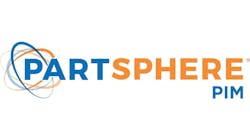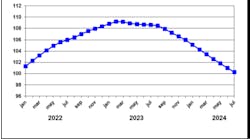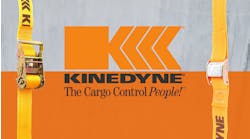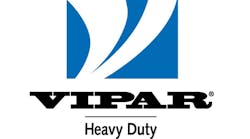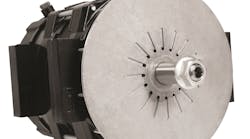In less than a year, if all goes according to plan, heavy-duty aftermarket suppliers, distributors, retailers, service providers and end-users will be able to rely on a common platform to share heavy-duty product data standards. Yet many in the industry may still be unaware of the HDDA: Heavy Duty (HDDA)-owned program, while others have misgivings—and misconceptions—about it.
So leaders of the Auto Care Association, of which HDDA is a part, have spent much of 2018 getting the word out, while also getting the program rolling.
Early this year, Auto Care Association President & CEO Bill Hanvey took the stage at Heavy Duty Aftermarket Week to explain just what heavy-duty product data standards are—and are not.
“It’s about communication. Is [the part called] an air bag, an air spring, an air shock? Very simply, the product data standards are a means for the industry to effectively and better communicate our products to the marketplace—whether you’re a manufacturer, a distributor, or a fleet.
“My only challenge to this group is: Let’s talk in the same language.”
He emphasized that the standards wouldn’t “throw everything else out.” Instead, it’s a matter of perfecting the language the industry uses today. “Let’s call an air bag, an air spring, an air shock one thing so everybody knows what it is. It sounds simple, and typically it is,” Hanvey said. “It’s a common definition of description and parts—that’s it.”
Hanvey then cleared up several misconceptions he’s heard in getting the industry on board. The data standards are NOT:
• A central data warehouse where manufacturers no longer control their own information
• A project to develop a heavy-duty application catalog
• A plot for the automotive retailer to enter the HD space
• The sharing of intellectual property, confidential or proprietary information, or manufacturing processes or sources; and
• A high-cost commitment.
He emphasized the development effort didn’t start from scratch, and industry representatives from “across the board” were already on board.
What’s in it for participants? For a product manager, it means creating a single set of product data that all customers will use—rather than creating datasets for each customer, for example. “It’s a matter of putting your data in a sequence that’s standardized.”
On the distributor side, the same efficiencies apply. “If you want to participate in e-commerce, it allows the suppliers to give you robust data,” he said. “It helps you sell related items. It allows you to use your product data to its full extent.”
For fleets, the advantages provide “one-stop shopping.”
“The fleets want common data, and they want it in a digestible format that’s consistent,” Hanvey said. “The fleets are driving this. No more returns because of bad data. It’s a matter of consistent placement of your product details: part number, size, length, width, how many per box. It’s all consistent.”
Even more simply, the standards are a way “to get the right part and the right place at the right time,” and to reduce warranty and return costs in the process. “If we can add back even a point of margin, then we have done our job—and we need every point of margin to compete because pressures are coming from all over,” Hanvey said.
In June, HDDA announced the release of a new web resource center dedicated to tracking the development of the standards. Included on standards.hdda.org are updates and highlights of the project status, downloadable information on the standards, a calendar of product category data collection and a volunteer form to participate in the standards creation as a subject matter expert.
The resource center will serve as an integral part of the project, which will include the standardization of product information across more than 8,200 key components for 150 heavy duty vehicle systems.
“We’re spending a significant amount of time with the manufacturers and the data receivers in the heavy-duty aftermarket,” Sheila Andrews, director, heavy duty programs and liaison for HDDA said then. “We’re recruiting companies to participate in the development process as subject matter experts. We’ve had incredibly strong recruitment from all across the supply chain, an incredible number of companies participating—providing data, and assisting us in validating as we build out the standards.”
Included in the resource center is the schedule of data collection for the top 20 parts categories, covering more than 85% of the parts sold in the market. Manufacturers offering products in each of those categories can now have a clear picture of when their participation is needed in the data collection process.
Later in the summer, HDDA launched the next phase of the project: defining the attributes for the top 20 categories of parts. The first five categories for the project were Brakes; Front Steer Axle Wheel End Components; Axles – Front Steering; Axles – Non-Driven, Rear; and Axles – Driven, Rear.
The manufacturing experts provide the product attribute definitions, which are combined into a working document by contractor Pricedex Software Inc., where commonalities are determined. The final stage for each category will have distributor and data provider experts reviewing the findings to confirm best practices for defining and describing each part.
Those best practices will ultimately form the expansion of medium- and heavy-duty vehicles for the existing Product Information Exchange Standard (PIES), used in the light-duty industry.
And earlier this month, four additional categories entered the research phase: Axels - Driven, Front Steering; Charging System; Ignition System; and Exhaust System.
HDDA also published the list of current volunteer companies and supporters, including many top HD manufacturers and distributors.
In providing an update to Trailer/Body Builders, Andrews again emphasized the importance of industry participation in the development of the standards.
The product timeline will change, she notes, as additional manufacturers volunteer in different categories. “If any manufacturers are interested in serving as a volunteer product expert, they can look at the timeline to understand when their category would come up,” Andrews said.
Additionally, maintenance aspect will be developed to incorporate VMRS codes. Another project will come up with the best way to actually look up the parts information.
“On the light-duty side, much of it can be looked up through year/make/model. That will have to be different for the commercial vehicle side because of the built-to-spec aspect of heavy duty,” Andrews said. “So we’re going to define the standards and the look-up by vehicle vocation.”
And again, experts will help define those vocations.
The target date for release of the standard is September 2019.
“The majority of what we’re doing have parallels on the automotive side, so we’re not reinventing the wheel,” she said. “We’re taking the existing product exchange standard and expanding it to what’s necessary for Classes 6-8—that’s really where the bulk of the work is.
“Everyone can feel comfortable that they will know the system they will be using, because it’s based off of a system they’re using now.”
